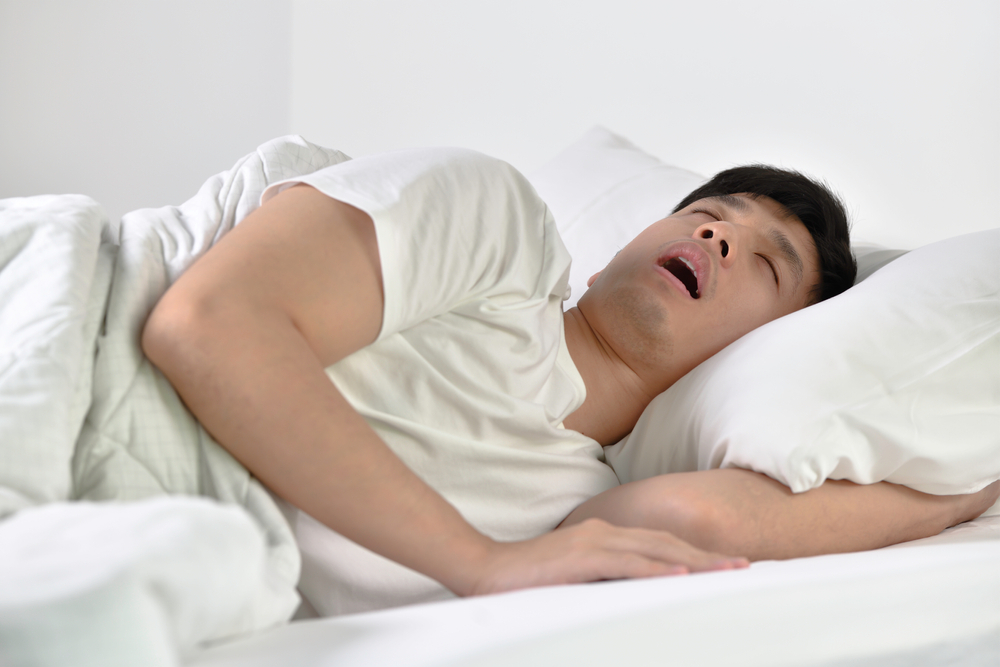
Is snoring a sign of breathing difficulty or a routine thing? This question is often a concern faced by 90% of people with obstructive sleep apnea who suffer from it but haven’t been diagnosed. In general, an interrupted sleep pattern and snoring are not normal and could be the result of a medical condition. Individuals experiencing breathing difficulties such as shortness of breath or complete loss during sleep should monitor the frequency at which it happens. Obstructive sleep apnea (OSA) is a sleep disorder in which breathing gets repeatedly interrupted during sleep due to a physical blockage of the upper airway, lasting longer than 10 seconds and at least five times per hour (on average) throughout the sleep period. Revive Research Institute holds obstructive sleep apnea clinical trials in Michigan for individuals struggling to sleep from obstructive sleep apnea. Participate today to access novel therapies.
This blog aims to comprehend obstructive sleep apnea in simpler words. Read on to learn more about the condition, its causes, symptoms, and recommended management approaches.
What Is Obstructive Sleep Apnea?
The National Commission of Sleep Disorders Research identifies sleep disorders as a significant public health burden. Obstructive sleep apnea (OSA) is one of the most common sleep disorders and affects approximately twenty million people in the United States (US), with 13% of men and 6% of women.
Obstructive sleep apnea is characterized by repetitive collapse or obstruction of the upper airway during sleep, manifesting as repetitive episodes of hypopnea (i.e., shallow breathing) or apnea (i.e., paused breathing). These episodes of hypopnea or apnea and drops in oxygenation concentration may lead to arousal from sleep, sleep fragmentation, excessive daytime sleepiness, and neuropsychological impairment.
What Causes Obstructive Sleep Apnea?
According to research, several factors are responsible for obstructive sleep apnea. The primary causes and risk factors are:
- Relaxation of throat muscles: During sleep, the muscles at the back of the throat naturally relax. In some people, these muscles can relax excessively, causing the airway to constrict and block airflow.
- Physical structure: Some people have a naturally narrow throat or enlarged tonsils or adenoids, which can block the airway. A large tongue or a small jawbone can also obstruct the airway.
- Obesity: Fat deposits around the upper airway may obstruct breathing. A majority, but not all, of people with obstructive sleep apnea are overweight. However, even a well-defined neck or a small amount of additional weight can cause the throat to constrict and induce sleep apnea.
- Nasal congestion: If you struggle to breathe through your nose due to an anatomical issue such as nasal bone deviation, nasal polyps, or allergies, obstructive sleep apnea is most likely to develop.
- Positional sleeping: Some people only experience sleep apnea when sleeping on their back, which can cause the tongue and soft palate to rest against the back of the throat and block the airway, producing loud snoring.
- Use of alcohol or sedatives: These substances can relax the muscles of your throat, increasing the risk of airway obstruction.
- Smoking: Smokers are more likely to develop sleep apnea than non-smokers because smoking increases the risk of inflammation and fluid retention in the airways.
- Medical conditions: Congestive heart failure, polycystic ovary syndrome, and prior strokes can increase the risk of OSA. Polycystic ovary syndrome, strokes, or other conditions that affect hormone levels might also increase the risk.
- Neck circumference: People with a thicker neck might have a narrower airway, increasing the risk of obstructed airflow.
- A narrowed airway: This might be a hereditary condition. Enlarged tonsils or adenoids can also block the airway, especially in children.
- Male gender: The incidence of OSA in men is twice as likely to happen than in women. However, the risk in women increases if they are overweight or maybe after menopause.
- Age: Sleep apnea is significantly more common in older adults.
- Hormonal disorders: People with acromegaly (an overproduction of growth hormone) or hypothyroidism may have an increased risk of sleep apnea.
What Are The Symptoms Of Obstructive Sleep Apnea?
Snoring is a characteristic symptom of obstructive sleep apnea. Other symptoms include:
- Interrupted snoring with periods of quiet (an apnea episode)
- A loud snore that resumes with breathing
- Morning headaches
- Increased daytime sleep routine
- Agitation and irritation upon little things
- Depression
- Increased forgetfulness
Diagnosis:
When diagnosing OSA, a combination of different measures such as clinical evaluation, patient history, and overnight polysomnography (sleep study) monitors to measure physiological parameters during sleep and other ways to determine the severity of breathing disruptions during sleep are crucial.
Related Conditions & Their Effect On Obstructive Sleep Apnea:
Obstructive sleep apnea has been associated with medical disorders, highlighting its importance beyond sleep disruption. In a few instances, OSA can be correlated with cardiovascular conditions such as hypertension, arrhythmias, and stroke. In addition, obesity and insulin resistance are two metabolic disorders strongly linked to obstructive sleep apnea. Many people with obstructive sleep apnea frequently exhibit neurocognitive abnormalities, emotional disorders like despair and anxiety, and an elevated risk of accidents because of daytime sleepiness from OSA.
Management Strategies:
The treatment for OSA has changed little over the past 40 years, with most patients turning to positive airway pressure (PAP), the most common form of which is continuous positive airway pressure (CPAP).
While PAP and related therapies may be useful in improving sleep characteristics and oxygenation, most patients find these devices uncomfortable or intolerable.
Also Read: An Unrecognized Symptom of Bipolar Disorder: Rage
Conclusion:
In conclusion, obstructed sleep apnea is a complex sleep disorder that can induce wide-ranging effects on physical and mental health. For thorough care and an improved quality of life, it is crucial to recognize the wide range of symptoms and comprehend how OSA is associated with numerous medical and psychological diseases. Healthcare experts strive to lessen the burden of OSA and its associated consequences, promoting healthy sleep patterns and overall well-being for afflicted people through early detection, specialized treatment options, and ongoing research, including clinical trials.

